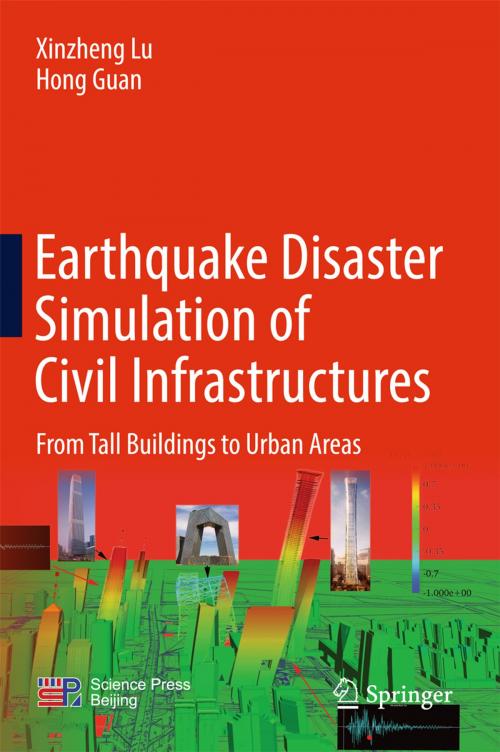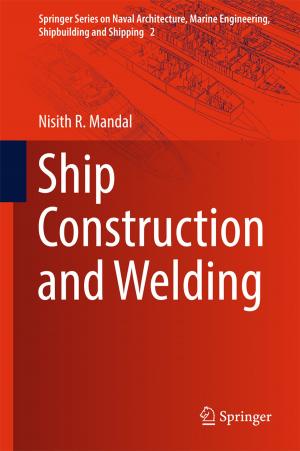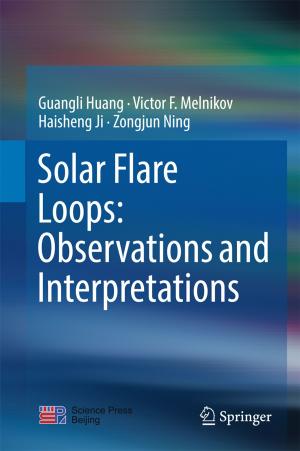Earthquake Disaster Simulation of Civil Infrastructures
From Tall Buildings to Urban Areas
Nonfiction, Science & Nature, Technology, Construction & Construction Trades, Computers| Author: | Xinzheng Lu, Hong Guan | ISBN: | 9789811030871 |
| Publisher: | Springer Singapore | Publication: | January 18, 2017 |
| Imprint: | Springer | Language: | English |
| Author: | Xinzheng Lu, Hong Guan |
| ISBN: | 9789811030871 |
| Publisher: | Springer Singapore |
| Publication: | January 18, 2017 |
| Imprint: | Springer |
| Language: | English |
Based on more than 12 years of systematic investigation on earthquake disaster simulation of civil infrastructures, this book covers the major research outcomes including a number of novel computational models, high performance computing methods and realistic visualization techniques for tall buildings and urban areas, with particular emphasize on collapse prevention and mitigation in extreme earthquakes, earthquake loss evaluation and seismic resilience. Typical engineering applications to several tallest buildings in the world (e.g., the 632 m tall Shanghai Tower and the 528 m tall Z15 Tower) and selected large cities in China (the Beijing Central Business District, Xi'an City, Taiyuan City and Tangshan City) are also introduced to demonstrate the advantages of the proposed computational models and techniques.
The high-fidelity computational model developed in this book has proven to be the only feasible option to date for earthquake-induced collapse simulation of supertall buildings that are higher than 500 m. More importantly, the proposed collapse simulation technique has already been successfully used in the design of some real-world supertall buildings, with significant savings of tens of thousands of tons of concrete and steel, whilst achieving a better seismic performance and safety.
The proposed novel solution for earthquake disaster simulation of urban areas using nonlinear multiple degree-of-freedom (MDOF) model and time-history analysis delivers several unique advantages: (1) true representation of the characteristic features of individual buildings and ground motions; (2) realistic visualization of earthquake scenarios, particularly dynamic shaking of buildings during earthquakes; (3) detailed prediction of seismic response and losses on each story of every building at any time period. The proposed earthquake disaster simulation technique has been successfully implemented in the seismic performance assessments and earthquake loss predictions of several central cities in China. The outcomes of the simulation as well as the feedback from the end users are encouraging, particularly for the government officials and/or administration department personnel with limited professional knowledge of earthquake engineering.
The book offers readers a systematic solution to earthquake disaster simulation of civil infrastructures. The application outcomes demonstrate a promising future of the proposed advanced techniques. The book provides a long-awaited guide for academics and graduate students involving in earthquake engineering research and teaching activities. It can also be used by structural engineers for seismic design of supertall buildings.
Based on more than 12 years of systematic investigation on earthquake disaster simulation of civil infrastructures, this book covers the major research outcomes including a number of novel computational models, high performance computing methods and realistic visualization techniques for tall buildings and urban areas, with particular emphasize on collapse prevention and mitigation in extreme earthquakes, earthquake loss evaluation and seismic resilience. Typical engineering applications to several tallest buildings in the world (e.g., the 632 m tall Shanghai Tower and the 528 m tall Z15 Tower) and selected large cities in China (the Beijing Central Business District, Xi'an City, Taiyuan City and Tangshan City) are also introduced to demonstrate the advantages of the proposed computational models and techniques.
The high-fidelity computational model developed in this book has proven to be the only feasible option to date for earthquake-induced collapse simulation of supertall buildings that are higher than 500 m. More importantly, the proposed collapse simulation technique has already been successfully used in the design of some real-world supertall buildings, with significant savings of tens of thousands of tons of concrete and steel, whilst achieving a better seismic performance and safety.
The proposed novel solution for earthquake disaster simulation of urban areas using nonlinear multiple degree-of-freedom (MDOF) model and time-history analysis delivers several unique advantages: (1) true representation of the characteristic features of individual buildings and ground motions; (2) realistic visualization of earthquake scenarios, particularly dynamic shaking of buildings during earthquakes; (3) detailed prediction of seismic response and losses on each story of every building at any time period. The proposed earthquake disaster simulation technique has been successfully implemented in the seismic performance assessments and earthquake loss predictions of several central cities in China. The outcomes of the simulation as well as the feedback from the end users are encouraging, particularly for the government officials and/or administration department personnel with limited professional knowledge of earthquake engineering.
The book offers readers a systematic solution to earthquake disaster simulation of civil infrastructures. The application outcomes demonstrate a promising future of the proposed advanced techniques. The book provides a long-awaited guide for academics and graduate students involving in earthquake engineering research and teaching activities. It can also be used by structural engineers for seismic design of supertall buildings.















